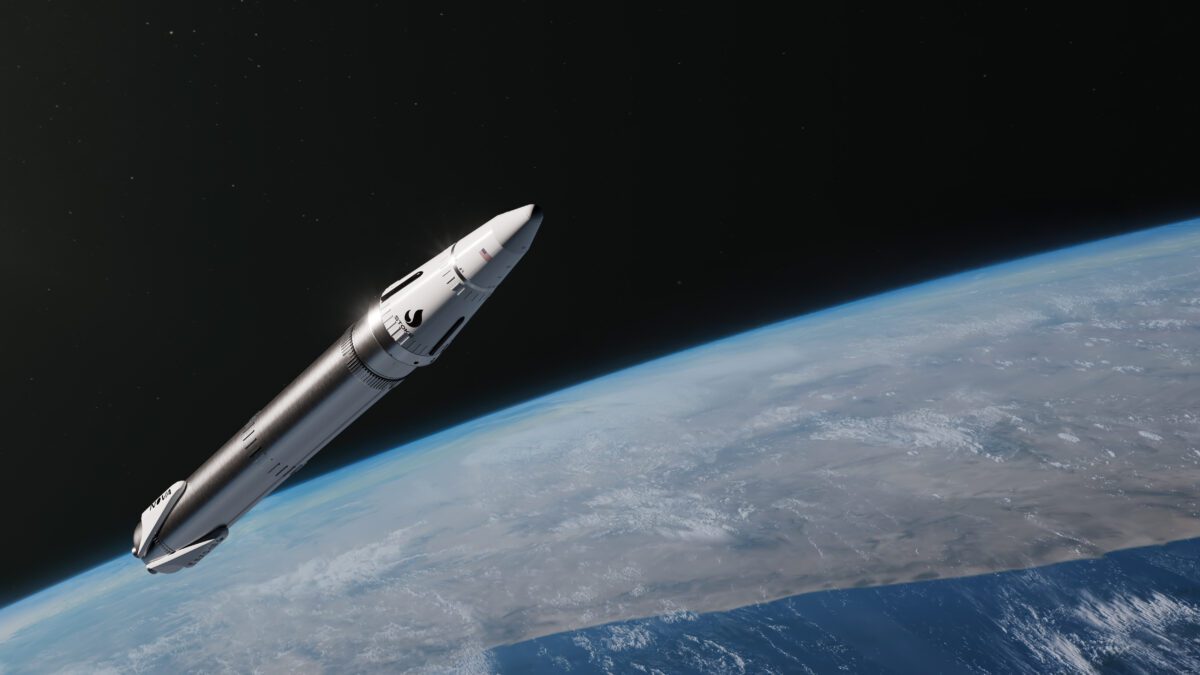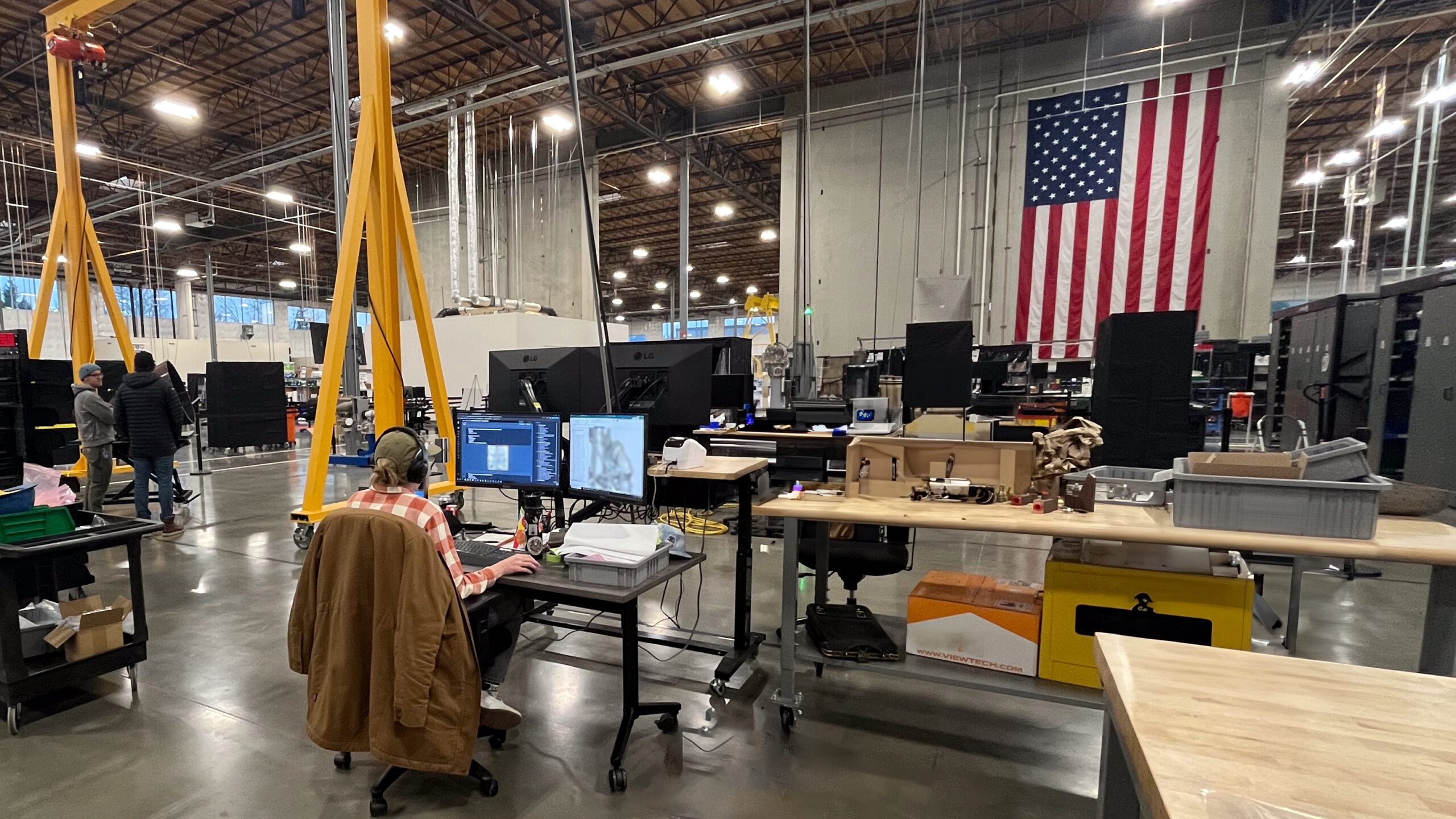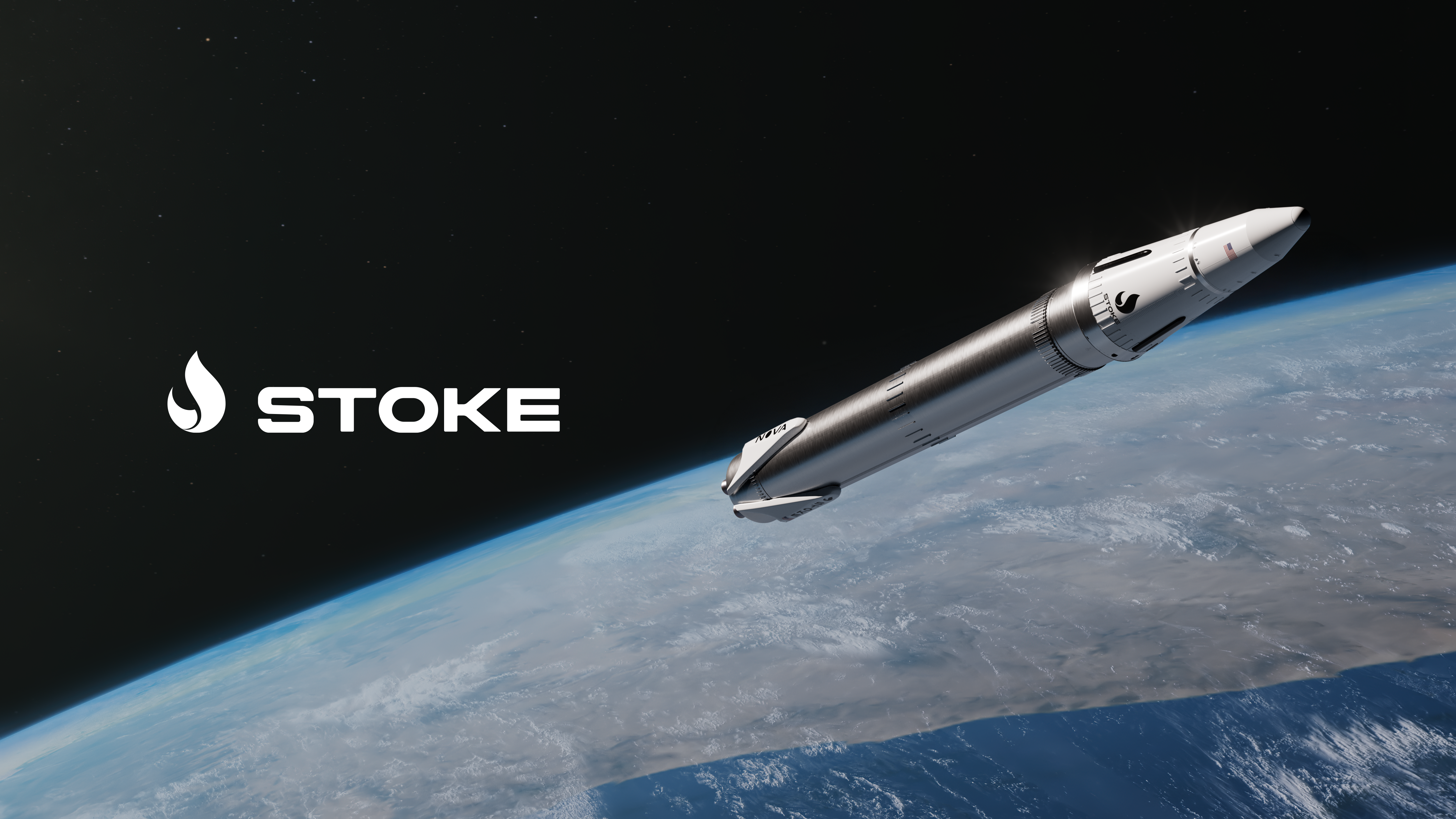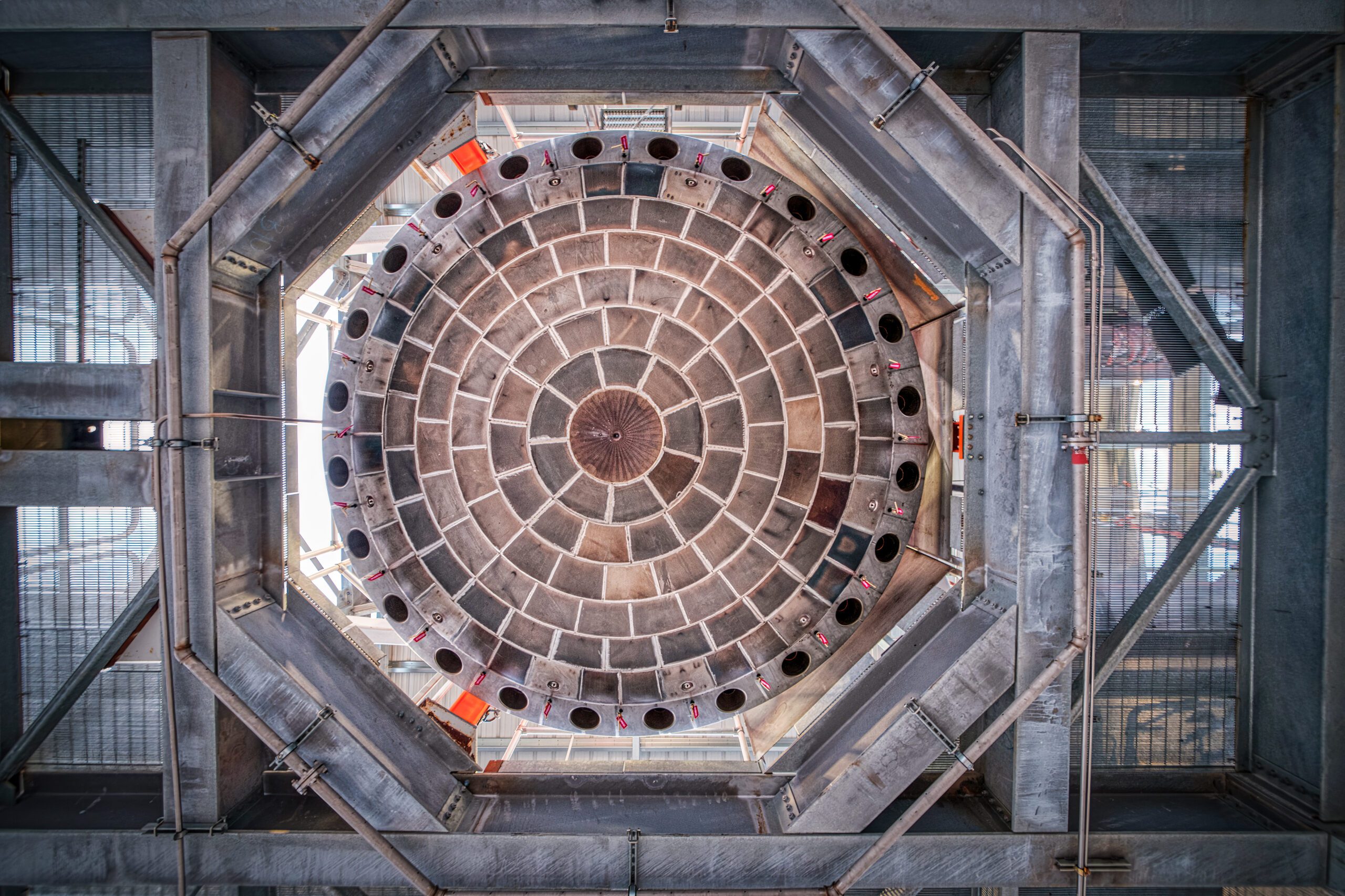
Introducing Andromeda, our rapidly reusable high-performance upper-stage rocket engine
Updated design upgrades performance, simplicity, and rapid reusability.
At Stoke, we’re laser-focused on our mission to enable seamless mobility to, through, and from space by using rockets that are fully, rapidly, and reliably reusable. To achieve this, we’re constantly learning through test and iteration. Each new design moves us closer to the holy grail of our industry: 100% full and rapid reusability.
Today we’re announcing the next iteration of our upper-stage engine, which we’re naming Andromeda. Built on lessons from earlier variants, Andromeda’s new design (called Andromeda 2) brings major improvements to performance, simplicity, and rapid reusability. With Andromeda 2 now mounted on its test stand at our Moses Lake Test Site, it’s time to dive into what’s new and why it matters.

Rendering of the Andromeda 2 upper stage rocket engine, including its integrated re-entry heat shield, shown here installed on Stoke’s reusable upper stage rocket.
A major leap for reusability
We view upper-stage reusability as the last major challenge that must be conquered before launch costs go down, and availability and reliability go up, each by an order of magnitude. It’s a problem that’s faced the industry for decades, and rapidly reusing a high-performance upper-stage rocket engine is a major part of that challenge. By integrating a metal heat shield with the engine, and by actively cooling it with liquid hydrogen, Stoke has created a system that can not only robustly survive the environments of orbital reentry, but can be ready to fly again immediately without inspection or refurbishment. It is truly the first of its kind.
As with any new technology, incremental improvements bridge the gap between early prototype and mature form. While Andromeda 1 proved that the concept works through a robust test program, including a vertical takeoff and vertical landing “Hopper” flight, Andromeda 2 has better ascent performance, better downmass (space-to-earth transport) capacity, fewer parts, and it weighs less. It also looks a bit different. The following explains what’s involved in these changes.
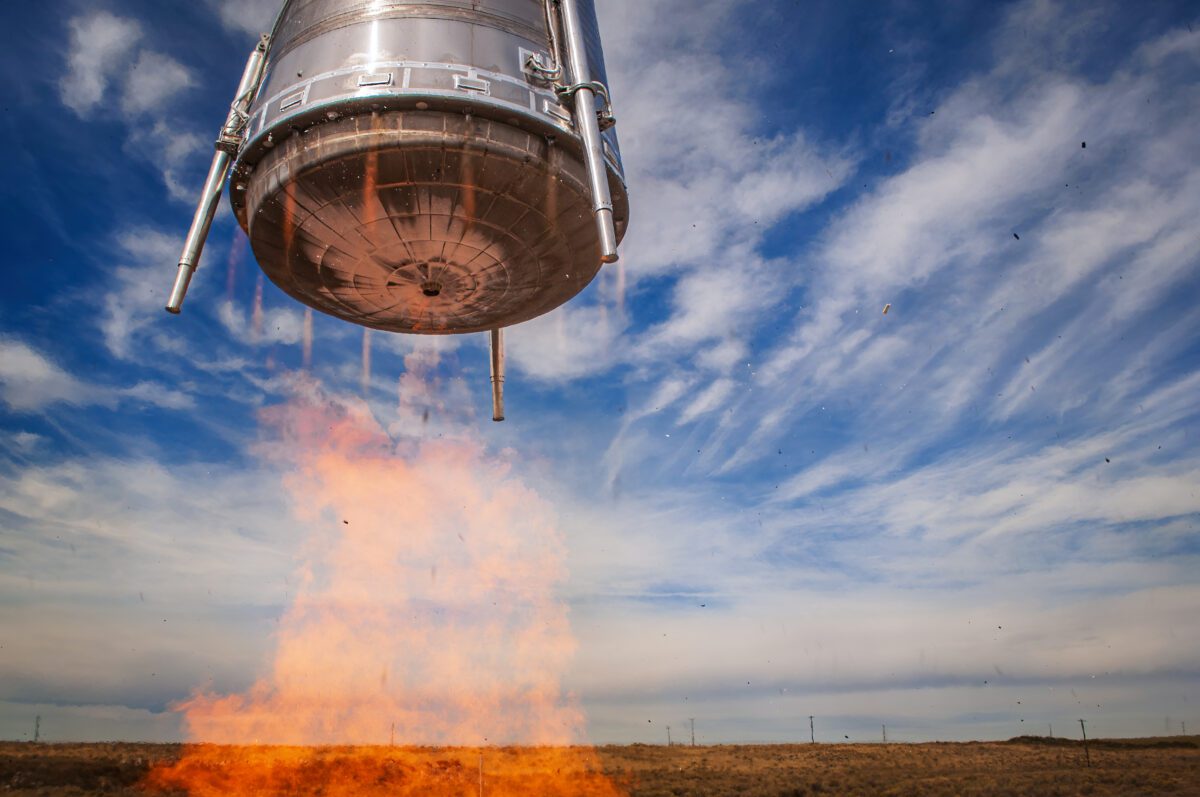
Andromeda 1, which combines a high-performance rocket engine with a liquid-cooled heat shield for upper-stage re-entry protection, is seen here on a flight demonstrating its vertical takeoff and vertical landing capabilities.
Thruster design improvements:
With Andromeda 2, we reduced the number of thrusters from 30 to 24 (but increased their individual size) and simplified the flow circuits to reduce the number of parts and to save weight without compromising thrust precision or thrust vector control. We also improved the thruster injector design, which now delivers better performance and further improves engine efficiency
Andromeda 2’s thruster nozzles are now designed to operate in two different modes: one in the vacuum of space and one inside the atmosphere. The vacuum nozzle produces a high expansion ratio for improved performance in space, and the sea-level nozzle is designed to produce stable plume expansion inside the pressure of the atmosphere during propulsive landing maneuvers.
Base heat shield changes:
The second-stage base heat shield is one of our differentiating elements. It serves not just as armor, but as an integral part of the Andromeda engine. By applying regenerative cooling—a technology proven to work for rocket engine chambers in which the thermal environment is about 20 times more intense—Stoke has created a heat shield that can readily handle atmospheric reentry and be ready for the next flight without refurbishment.
While these fundamentals remain unchanged, the new design features a different form factor. Andromeda 2’s base shape returns to one of our earliest concepts, featuring a continuously curved contour across the entire base of the vehicle, and the thruster nozzles fully embedded along the outer circumference. This geometry reduces weight compared to Andromeda 1, increases downmass capacity, and together with the new thruster nozzles, enables a more definitive qualification program in which we can test the thruster ignition and operation in vacuum conditions at our ground test facilities. This mitigates a big risk ahead of our first orbital launch.
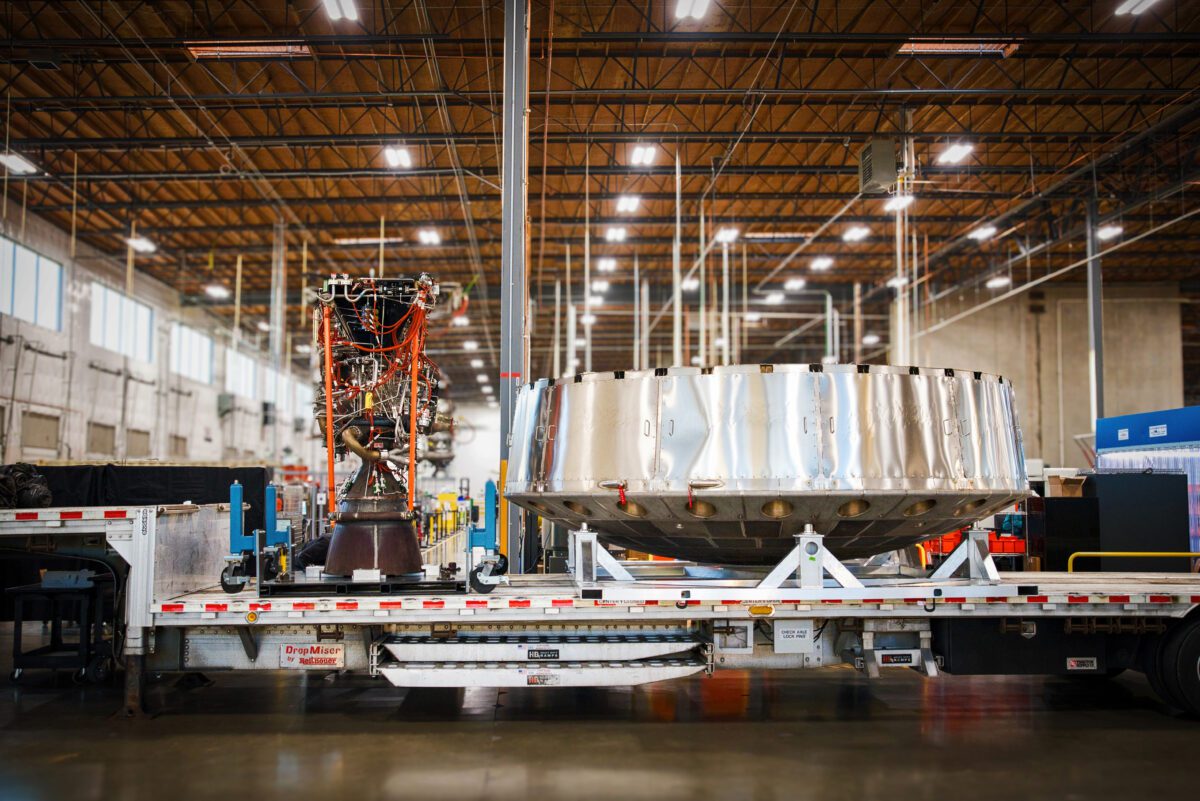
Andromeda 2 (right) seen in its shipping fixture next to Zenith (left) on Jan. 27.
Increased serviceability of the engine:
Packaging, access, and serviceability are difficult constraints in any aerospace design, and Andromeda’s form factor presents some unique challenges. For Andromeda 2, design efforts have focused on turbomachinery and instrumentation placement, feedline design, and thruster pod connections to better optimize operability. These changes further reduce complexity and allow the entire engine to be serviced—or even replaced—within hours or minutes. Rapid turnaround isn’t merely a goal, it’s baked into the design.
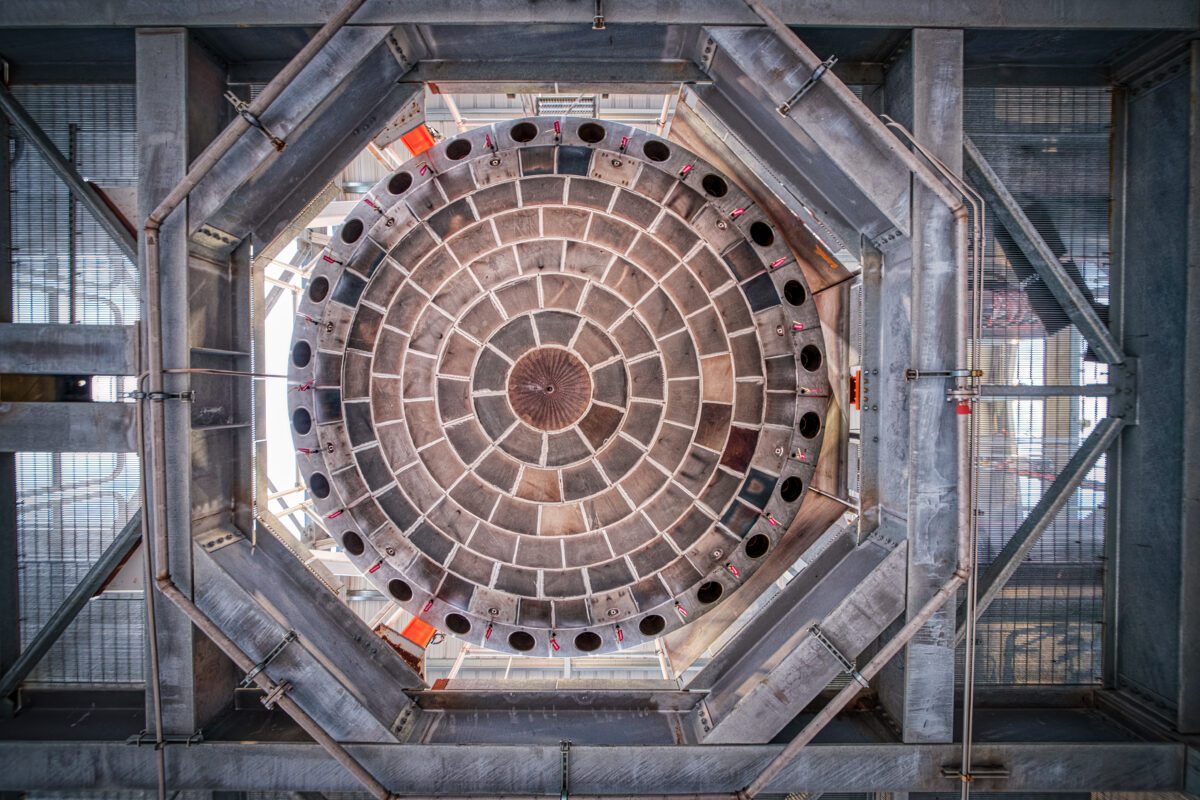
Looking up at Andromeda 2 installed on Stoke’s hydrogen engine test stand.
Stage 1 interface and hot staging:
As we have progressed from concept demonstration to orbital vehicle design, we put concerted effort into the stage-to-stage interface. The result elegantly ties Andromeda’s heat shield to Stage 1 during ascent and effectively eliminates the need for the interstage volume (and mass) that accommodates the large bell nozzles on typical upper-stage engines.
When fixed to Stage 1 during ascent, Andromeda’s thrusters are positioned outboard of the Stage 1 outer diameter. This allows Andromeda to ignite while still attached to the first stage without causing damage to the base of Stage 2, and without the need for a heavy one-time-use interstage shield to protect Stage 1. This “hot staging” operation reduces gravity losses from the flight profile, eliminates the need for stage separation pushers, and overall significantly improves Nova’s mass capacity to orbit.
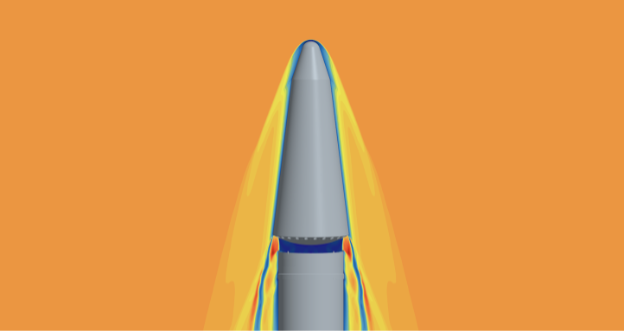
Numerical simulation of hot staging maneuver, showing Andromeda’s plume flowing outboard of Nova’s Stage 1 structure.
Why all of this matters
Stoke was founded with the goal of making the space economy a natural extension of the global economy. That will require seamless mobility to, through, and from space, which we believe is only possible with reliable and rapidly reusable transportation services. It’s not just rocket science, it’s common sense; efficient and durable designs that reduce complexity lead to better performance and faster turnarounds.
With Andromeda 2, we are one step closer to that vision. The changes we’ve made to evolve Andromeda 1 aren’t just about improving performance, they’re about making our Nova rocket practical for everyday use. We’re excited about what that represents not only for Stoke, but for the future of space development: lower costs, better availability, higher reliability, and access to any orbit at any time. The era of full and rapid reuse is just around the corner!
Ad astra per aspera.
